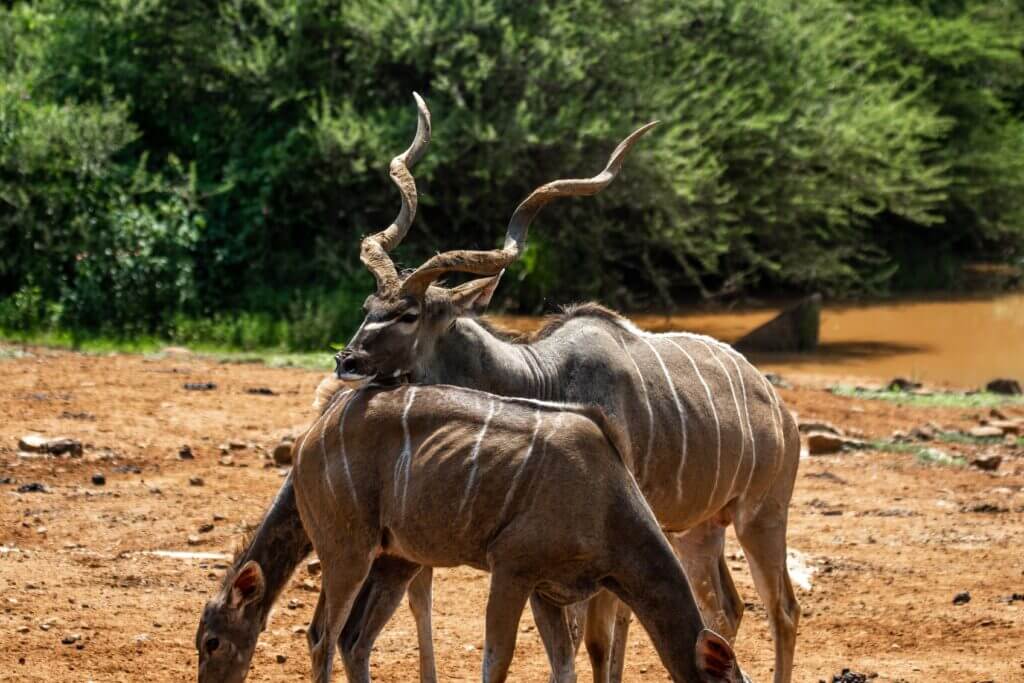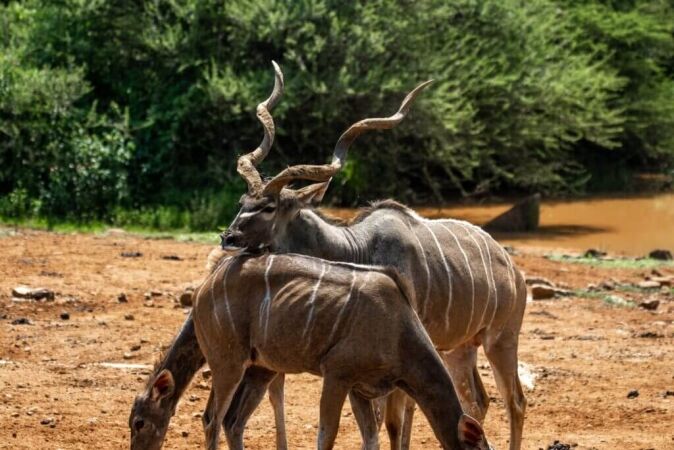

There is nothing like an African game hunting safari focusing on large African plains game antelope. Big game hunting throughout the world is a privilege, and as with any African plains game hunting, shot placement is critical to ensure a swift and humane death for the targeted species. For this shot placement article, we have grouped large game antelope into a single category as the theory and target of the shot placement remain constant. Large African antelopes include the Cape eland, Livingston eland, Lord Derby eland, Bongo, Sable, and Roan.
To successfully hunt one of Africa’s large antelopes, the first and most important consideration is that the hunter needs to understand the antelope’s anatomy. The hunter needs to know the exact position of the vital organs, including the heart, brain, and lungs. When hunting large antelope, any well-placed bullet from a 30-caliber rifle loaded with not less than 180 grains will work well.
When on a large antelope hunting safari, the big game hunting enthusiast has three practical options in terms of shot placement, namely: Head/Brain, Heart and Lungs.
When studying the anatomy of the antelope, the heart and lungs make a large target area (much bigger than the brain or neck). The projectile will damage the actual heart and/or lung, along with the antelope’s major arteries. The result of the damaged arteries will be massive and rapid blood loss, with death coming quickly. This target area will be approximately 8-10 inches when targeting large antelopes.
When the antelope is standing broadside, the perfect shot will be a third of the way up just behind the shoulder. The distance is calculated from the bottom of the brisket to the top of the spine.
If the hunter shoots a little high, the heart may be missed, but the lungs are damaged, and the shot will still be fatal. The game hunter can also shoot the antelope on the shoulder, breaking it. Good penetration by the bullet can break the opposite shoulder simultaneously.
If the antelope is quartering towards the hunter, a slight shot placement adjustment must be made, and the bullet must enter the antelope just in front of the shoulder. Should the antelope be facing away from the hunter, the shot placement will be a couple of inches behind the shoulder.
When on a game hunting safari for large antelopes, this is the shot that your professional hunter will encourage the hunter to take. It is the safest option, with the least margin of error.
The neck of a large antelope is extremely difficult to hit while hunting large antelopes. The neck of the antelope presents a small target. The nerves, spinal cord, and neck vertebrae run through a very narrow band. Should the hunter only nick this band, the antelope may drop in shock but then recover, stand up, and run away.
When large antelope hunting in Africa, the neck shot is not recommended.
The brain of the large game antelope as a target is much smaller than the heart and lungs. The head of the antelope also moves and twitches creating even more possibilities for concern.
Miss the brain on the first shot, and the game hunter has a large, wounded animal, not leaving much of a blood spoor on his hands. This is not the position any hunter wants to be in and has the potential to turn into a nightmare.
Hunters are often tempted to take this shot due to habitat and limited visibility. Brain shots require extreme accuracy. Over longer distances, bullet performance can be affected by the likes of wind, or the hunter having calculated the trajectory correctly.
Failed brain shots while big game hunting safari normally results not only in the antelope escaping but also suffering a slow and painful death due to blood loss, infection, and dehydration. A failed brain shot is inhumane, and this shot placement will not be recommended by the professional hunter.
When it comes to game hunting and shot placement on large antelope, it is the primary responsibility of hunters to kill the animal with the first shot, it really is just that simple